Before the sun stretches over the horizon, the air is cool and still. Mist drifts above the floodplains, elephants graze quietly nearby, and zebras glide across the land as if they have their own parade route.
On a horseback safari in Botswana, you’re not merely observing the wild; you’re moving through it. Every hoofbeat is a heartbeat of the land, and suddenly the world feels calmer and more alive all at once.
This isn’t a race from sighting to sighting. It’s about slowing down enough to notice how sunlight glints off the channels, how reeds sway in the morning breeze, or how your horse seems to share your curiosity.
From the silver waterways of the Okavango Delta to the ochre dunes of the Kalahari, each step brings you closer to the rhythm of Botswana.
Your guide might chuckle and say, “Watch the elephants; they like an audience, but not one that claps.” You’ll laugh, because it’s true. Here, you’re part of the landscape, not just passing through it.
Why Choose a Horseback Safari in Botswana?
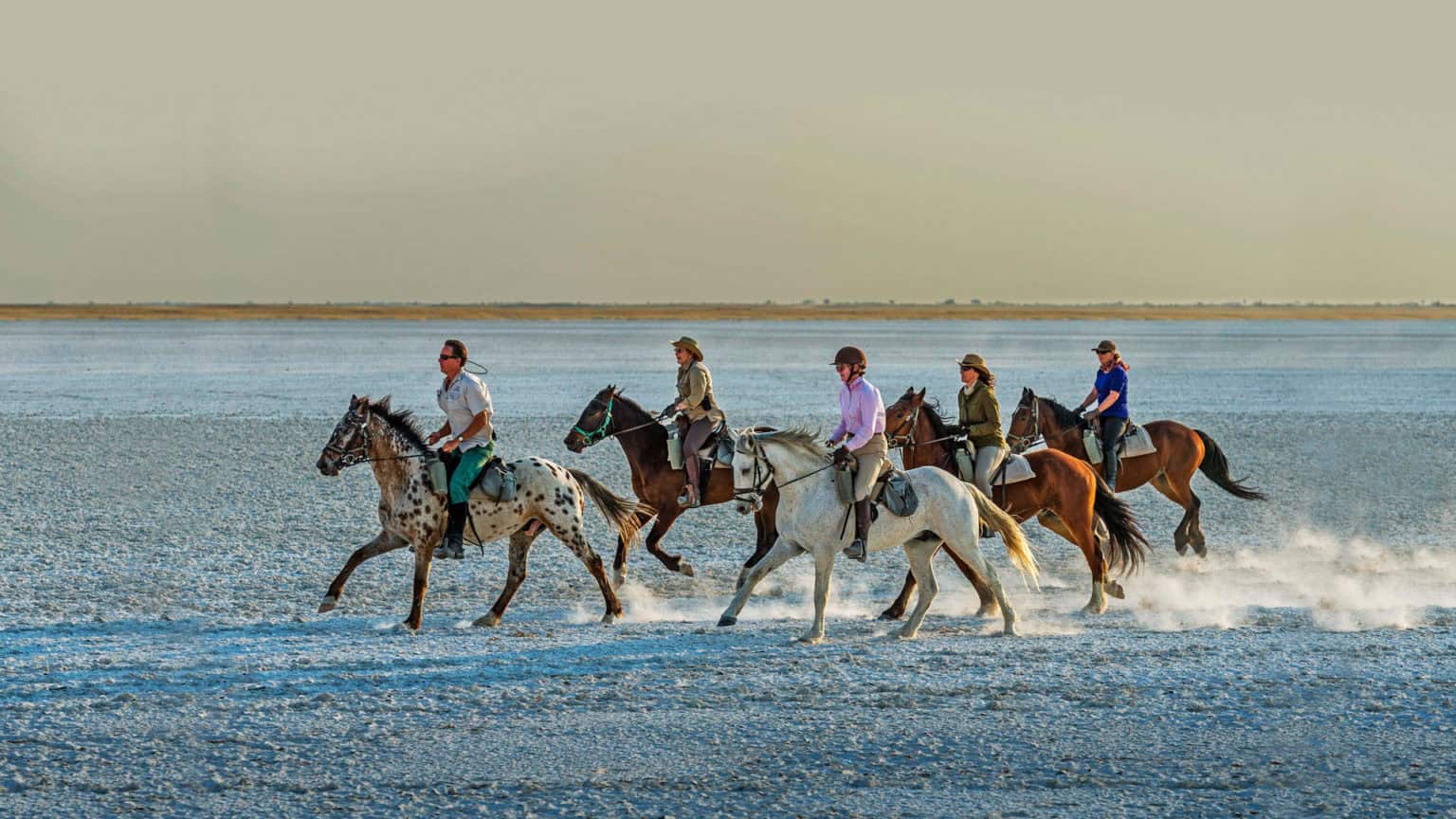
Feel the Land Beneath You
Botswana’s ecosystems tell stories if you’re willing to listen. The lush floodplains of the Okavango, the salt-encrusted Makgadikgadi, and the wild ridges of Tuli Block each have their own voice.
On a Botswana horse safari, the world doesn’t rush past your window; you move through it, sensing every rise and fall, every texture beneath the hooves. Your senses sharpen: the warmth of sun-warmed sand, the distant trumpeting of elephants, and the gentle sway of reeds in the wind.
One moment you’re gliding through silver channels; the next, the Kalahari stretches endlessly ahead, reminding you that sometimes silence itself is a sound worth feeling.
A Natural Connection to Wildlife
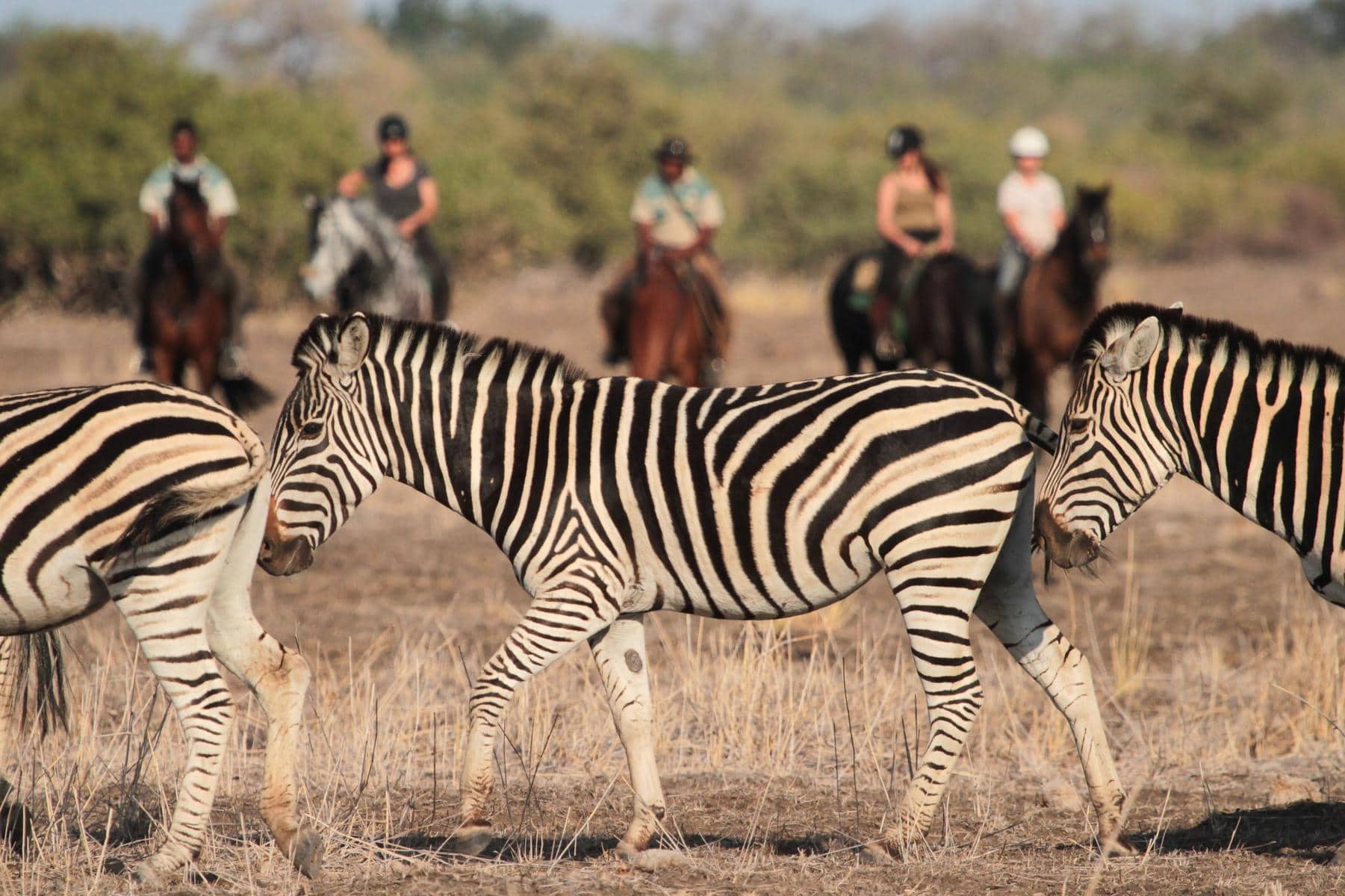
Animals perceive horses differently. They don’t startle at engines or human voices. From the saddle, you become part of the scenery.
Giraffes pause to watch you, elephants meander past, and antelope graze beneath baobabs as if you were simply another ripple in the wild.
A horseback riding safari in Botswana allows intimacy and respect, giving you access to behaviour most vehicles never reveal.
Sometimes, a curious zebra sidles up, eyeing your horse as if to say, “You’re new here, aren’t you?” It’s these small moments that make the adventure unforgettable.
Travel Light on the Land
Without engines or dust trails, a horseback safari in Botswana leaves the gentlest footprint. You blend into the landscape rather than disturb it.
Guided by experts who know every tree, track, and subtle shift in the wind, you move quietly through mostly untouched wilderness. The feeling is almost sacred, like stepping lightly in a cathedral built by nature itself.
Adventure, Reimagined
If you’ve already experienced a traditional safari, this is something different. Trading four wheels for four legs transforms familiar sights. Imagine cantering across a sunlit salt pan, air sharp in your lungs, horizon stretching like a living canvas.
This isn’t about speed; it’s about finding your rhythm with the horse, moving as one through landscapes that feel both ancient and immediate. When the wind catches your hair and a herd of zebras drifts past, you might smile to yourself.
There’s something about this that feels both wild and exactly right.
Top Horseback Safari Destinations
Okavango Delta
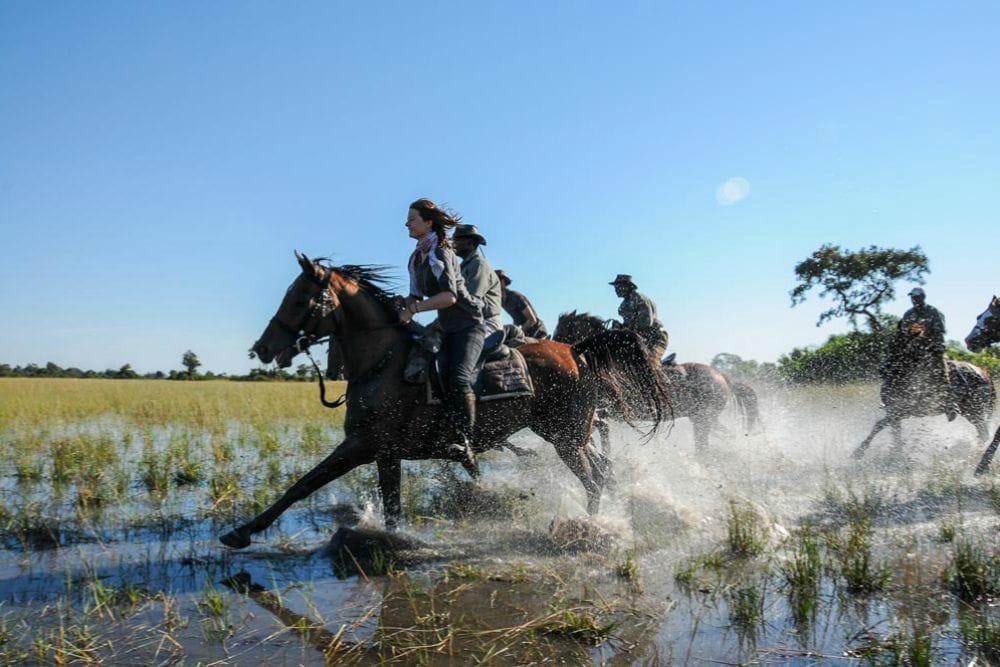
A maze of channels and islands, the Okavango is magical on horseback. Ride across shallow waters while lechwe leap around you, or canter through open floodplains where elephants graze.
The Delta reveals itself slowly here; each bend in the waterway offers something new, something worth pausing for.
Makgadikgadi Pans
Crossing the Makgadikgadi on horseback feels otherworldly. When the zebra migration sweeps through, the salt pans turn into a living tapestry of stripes and dust.
The vastness here puts everything into perspective: you, your horse, and thousands of animals moving across a landscape that seems to belong to another planet entirely.
Tuli Block
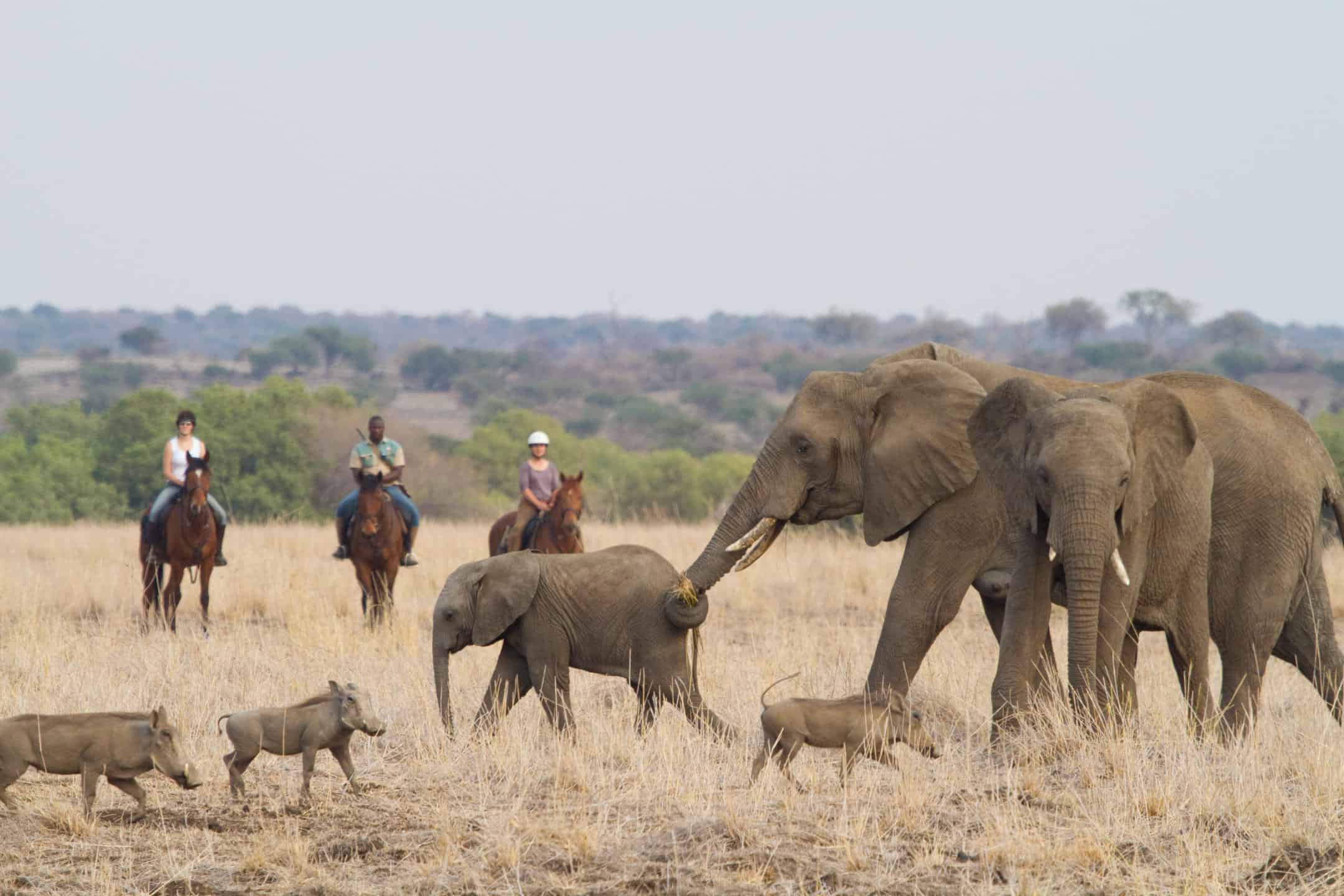
Ancient baobabs rise from rocky soil here, and elephants wander beneath them. Trails lead to hidden San rock paintings that whisper stories of people who read the land long before you. Riding through Tuli feels like flipping through a history book scented with sun-warmed sand and grass.
Selinda Reserve
Between Okavango and Chobe, Selinda offers trails over water and dryland, giving a complete taste of Botswana’s variety.
Wild dogs dart across the plains, lions laze in the shade, and every bend in the trail might reveal something new. On a Botswana horse safari, Selinda feels like a banquet for the senses that never ends.
Kalahari Desert
Vast, untamed, and starkly beautiful, the Kalahari rewards patience and quiet observation. Ride over copper sands at sunrise, watch oryx shimmer on the horizon, and feel the solitude that defines this heartland. Even your horse seems to respect the silence, moving as if not to break it.
Tips for an Unforgettable Horseback Safari
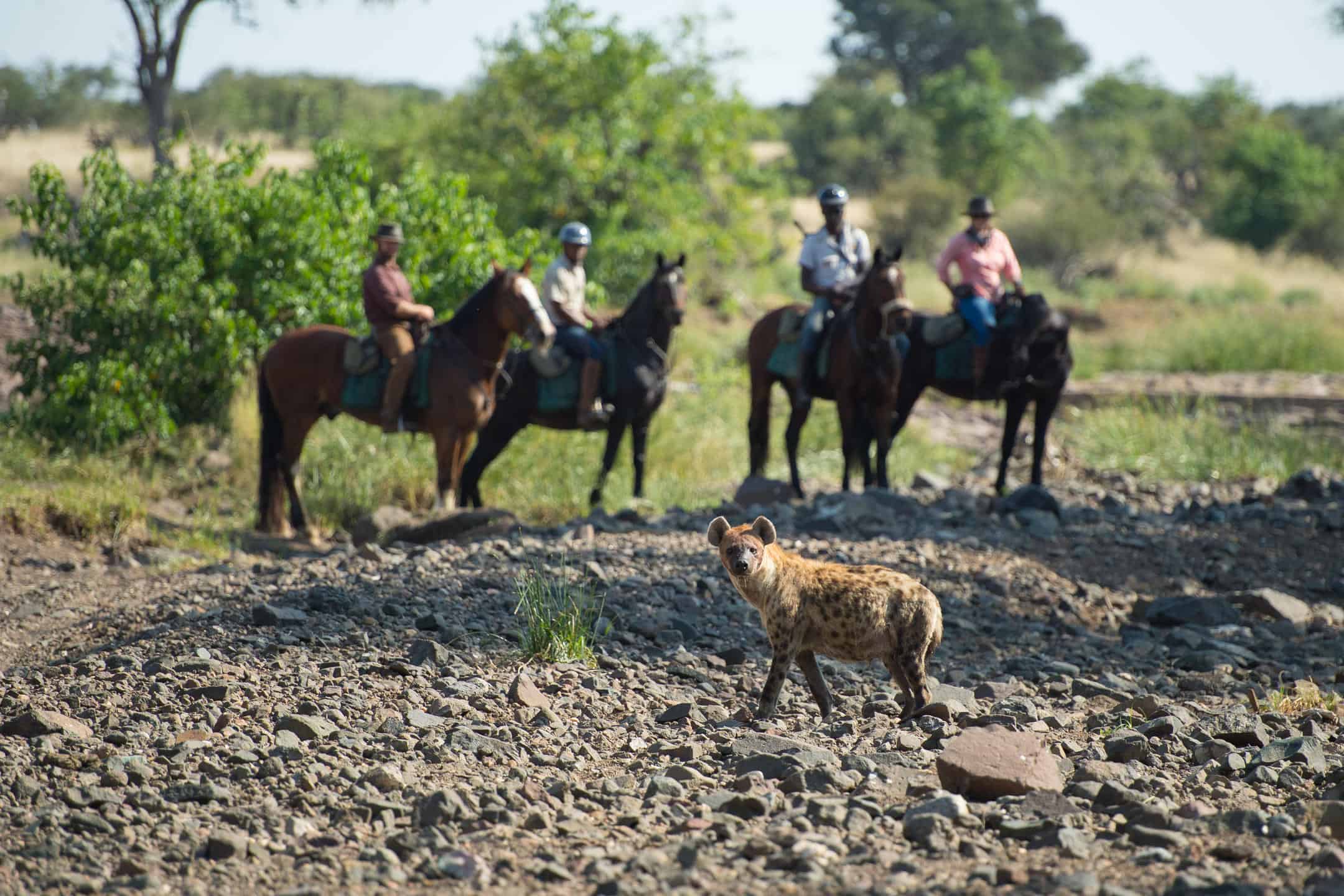
- Know your pace; being honest about your riding ability helps guides match you with suitable terrain.
- Pack wisely; long sleeves, boots, and a helmet are essential for comfort on long rides.
- Pick the right time; from May to September, skies are clear, mornings are cool, and animals gather around waterholes.
- Stay fit; multi-day rides can be demanding but richly rewarding if you’re prepared.
- Choose experienced guides; we work with guides who have spent a lifetime reading the land, people who know when elephants like to cross, where the light falls best, and which trails whisper of lions from the night before. On a horseback safari in Botswana, that experience becomes your compass, turning every ride into a story worth telling.
Ride to the Beat of Botswana
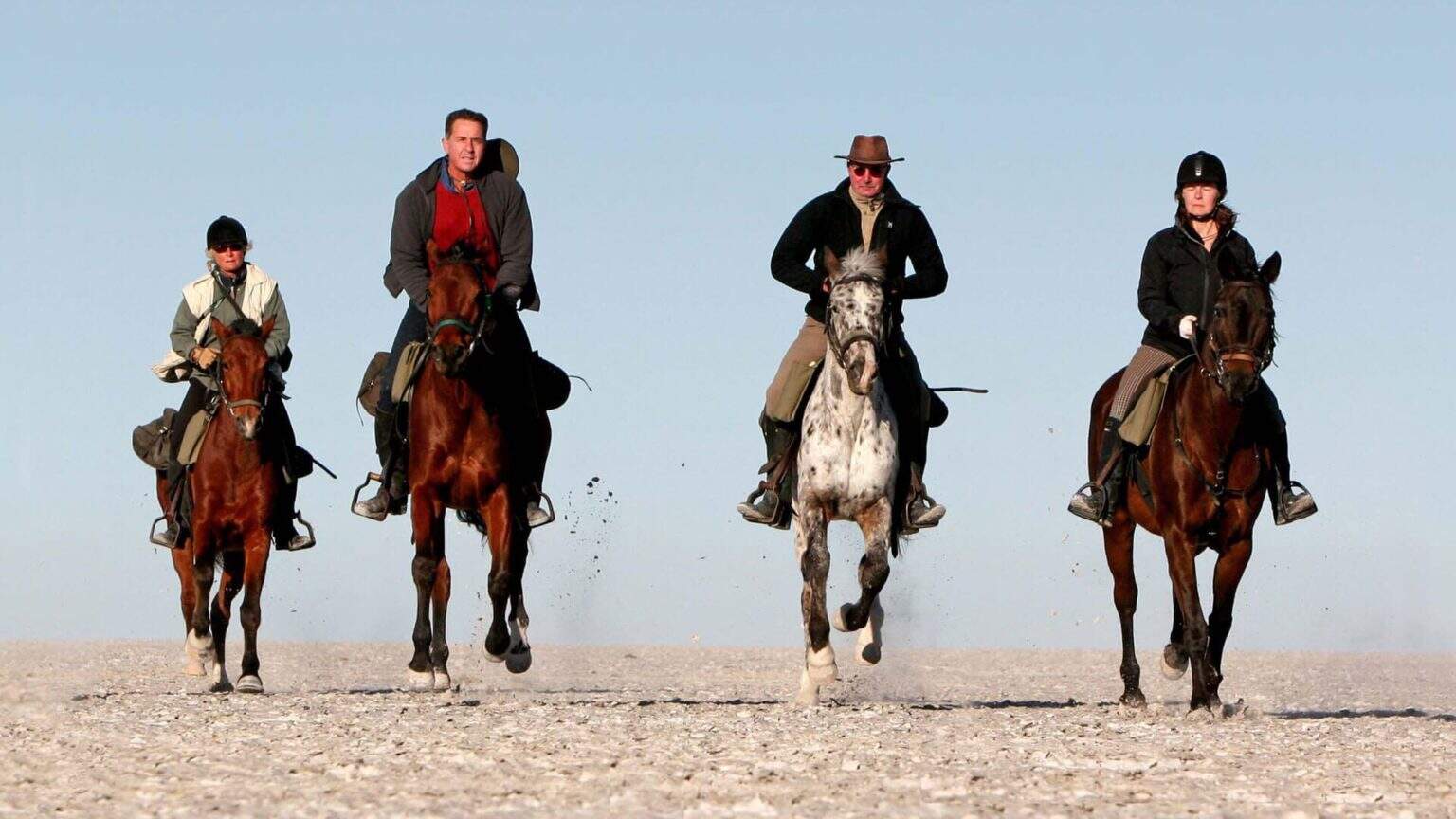
This isn’t just another way to see wildlife. It’s a way to belong: riding where elephants have walked for centuries, moving through the wild heart of a country that’s still listening to its own rhythm.
Each stride reminds you that life here unfolds at its own pace, and all you need to do is notice.
The memory lingers long after you’ve returned home. You’ll find yourself smiling at nothing in particular, still feeling the rhythm of hooves, still moving with the wild.
Ready to Find Your Rhythm in the Wild?
If something stirred while reading this, that’s your cue. We’re based right here in Africa, and we’ve been planning journeys like this for well over a decade. Let’s start sketching out your horseback adventure, the kind that stays with you long after the dust settles.























